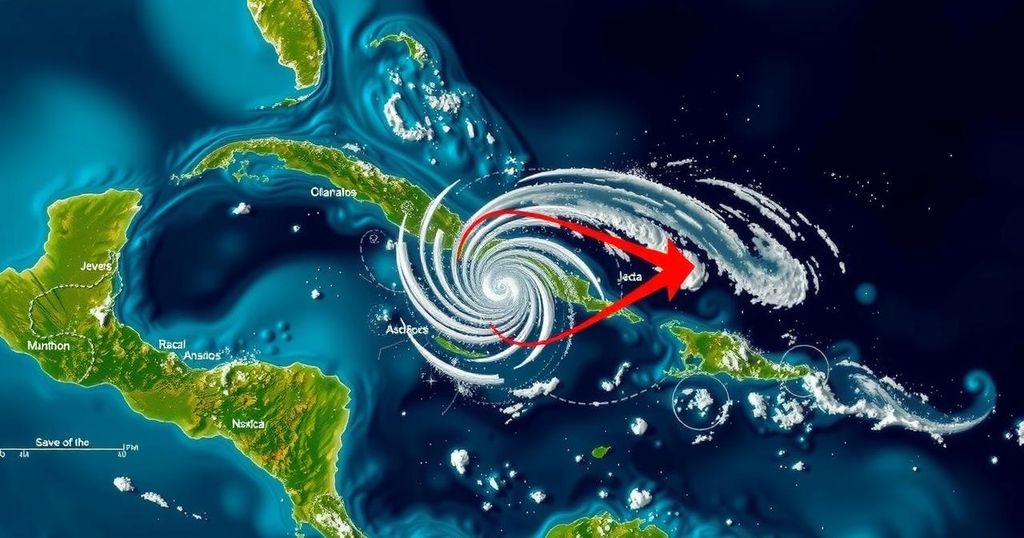Hurricane Rafael is intensifying into a Category 2 storm, expected to impact Cuba significantly before moving into the Gulf of Mexico. Residents from the Florida Panhandle to Texas are cautioned to stay alert for potential effects. Additionally, a tropical disturbance in the Atlantic may develop into a low-pressure system, signaling an active 2024 hurricane season with multiple storms already reported.
As Hurricane Rafael progresses through the Atlantic, it has intensified to a Category 2 storm, boasting maximum sustained winds of 110 mph. The National Hurricane Center (NHC) has announced that Rafael poses significant risks, including damaging winds, life-threatening storm surges, and heavy rainfall, thus raising concerns regarding potential flooding and mudslides in Cuba, where it is expected to make landfall later today. Following its approach to Cuba, the hurricane is forecasted to continue into the Gulf of Mexico as a substantial hurricane. The storm’s forecast path indicates a likely landfall along the central Louisiana coast; however, the NHC has warned that steering currents may redirect the storm anywhere from the Florida Panhandle to the Texas coast. Gulf Coast residents are strongly encouraged to remain vigilant and prepare for potential impacts, as effects may reach parts of Texas irrespective of Rafael’s exact trajectory. In addition to Hurricane Rafael, the NHC is monitoring a tropical disturbance nearing the Leeward Islands, characterized by disorganized showers and thunderstorms. This system may lead to an area of low pressure developing in the northern Leeward Islands by tonight or Thursday, with a slight chance of further development as it approaches the Southeast Bahamas, Virgin Islands, and Puerto Rico. Formation chances remain low at 20% in the next 48 hours and 30% within a week. The 2024 Atlantic hurricane season has proven to be quite active, having produced 16 named storms thus far, 10 of which escalated into hurricanes, including four major hurricanes categorized at level 3 or greater. The season’s early forecasts predicted 17 to 24 named storms, of which 8 to 13 might become hurricanes, emphasizing the ongoing need for vigilance among coastal populations.
The article discusses the current status and projected path of Hurricane Rafael as tracked by the National Hurricane Center (NHC). It highlights the storm’s intensification and potential impacts on Cuba and the Gulf Coast of the United States. Additionally, it brings attention to another tropical disturbance that could develop into a tropical system. The article also reflects on the activity of the ongoing 2024 Atlantic hurricane season, characterized by numerous named storms and hurricanes, underscoring the importance of preparedness among affected populations.
In summary, Hurricane Rafael presents a serious threat as it approaches Cuba and the Gulf of Mexico, with significant risks of severe weather effects. Residents across the Gulf Coast are advised to stay informed and prepare for the hurricane’s potential impact. Concurrently, the NHC continues to monitor another tropical disturbance, highlighting the current active Atlantic hurricane season and reinforcing the necessity for vigilance and readiness among communities.
Original Source: www.statesman.com






